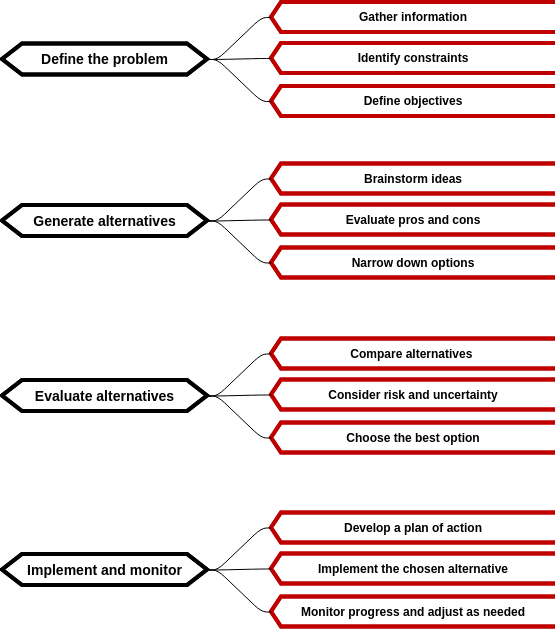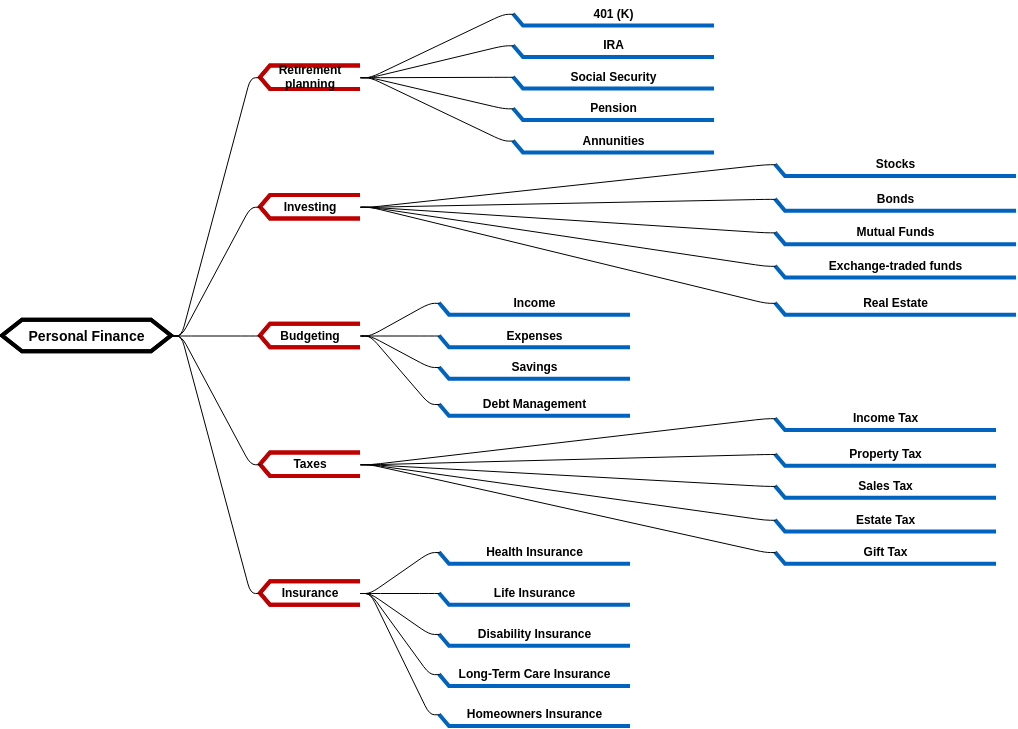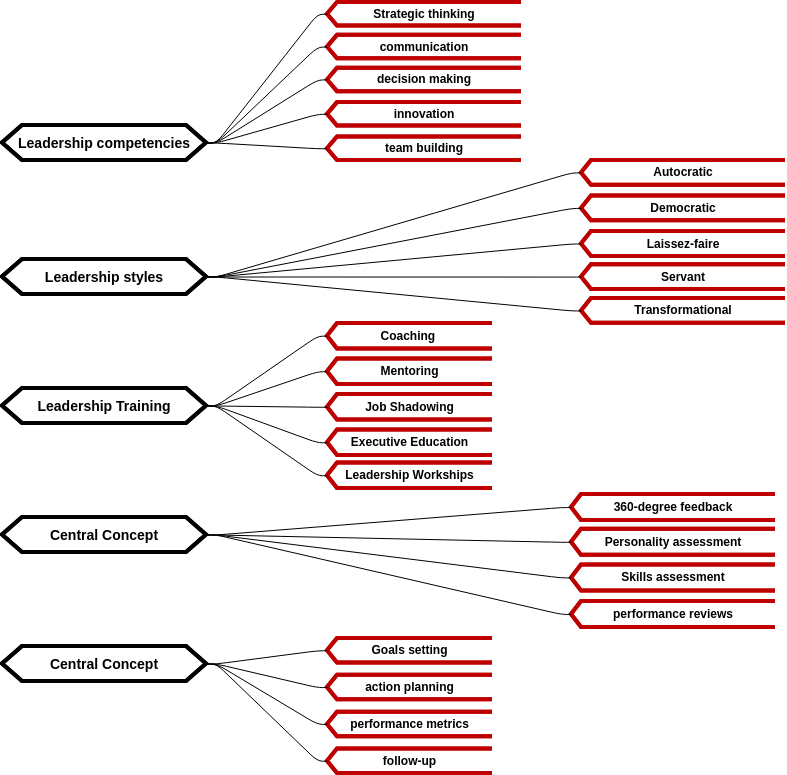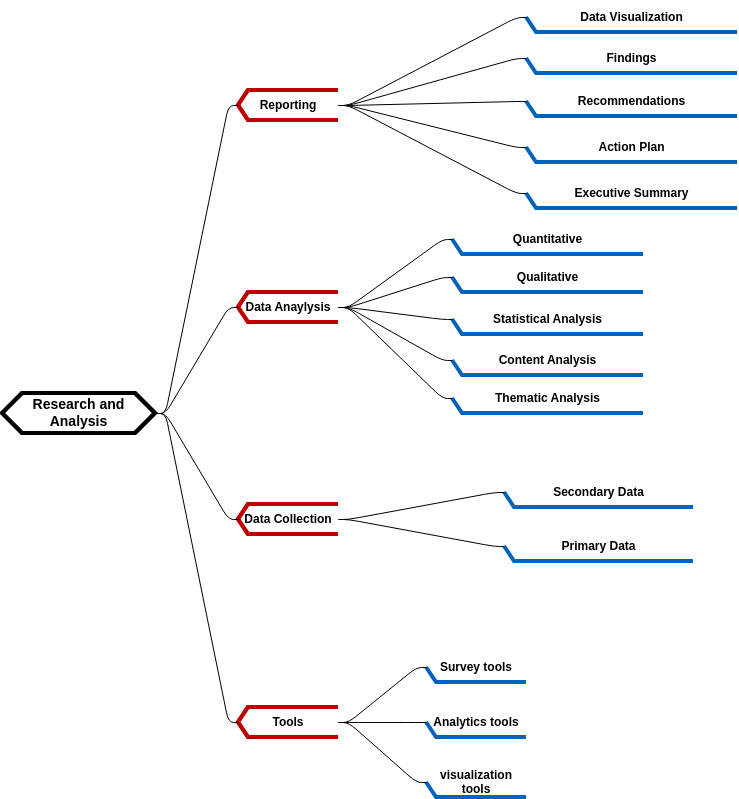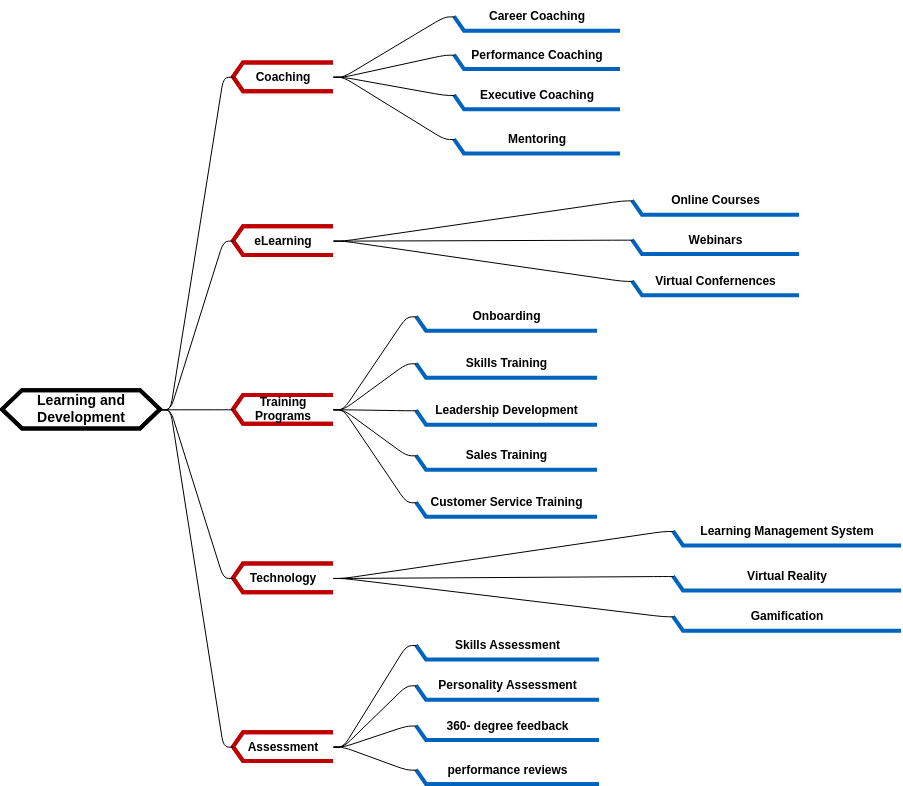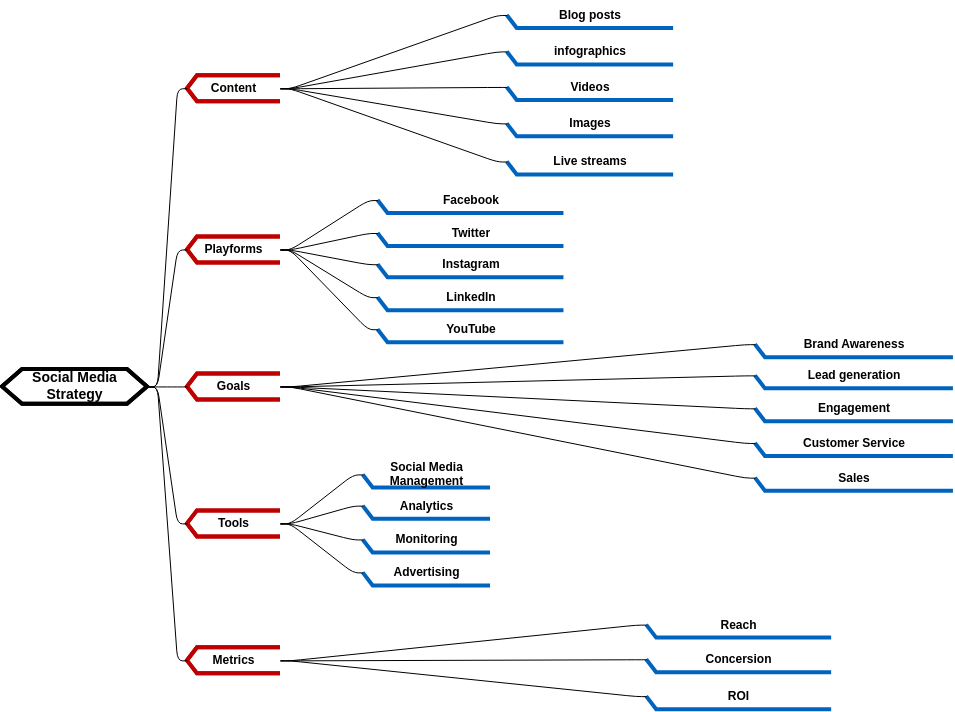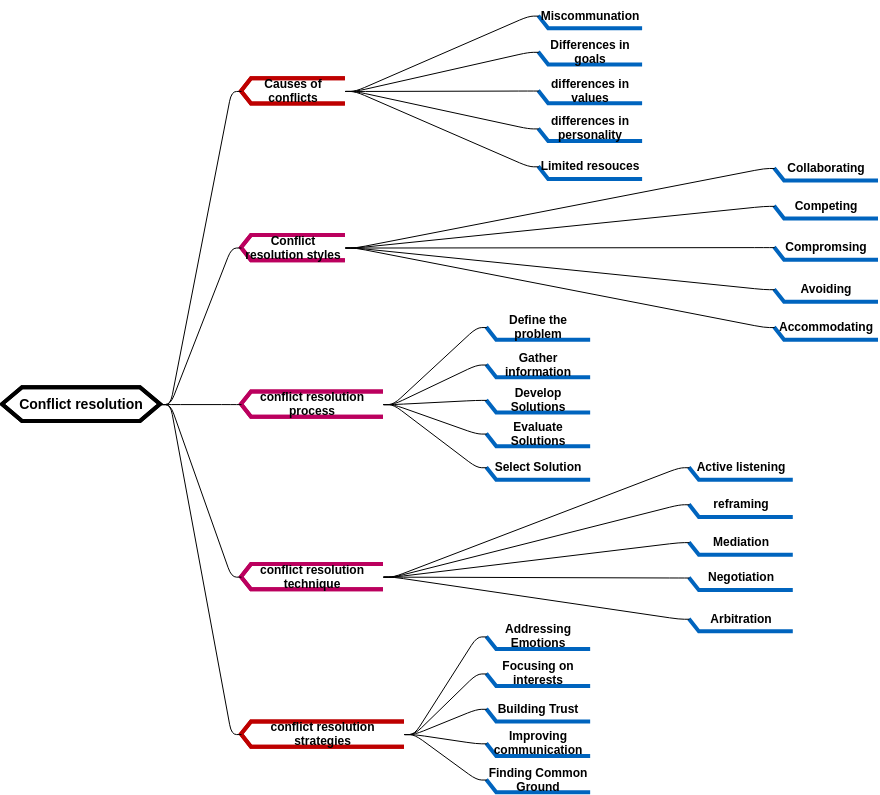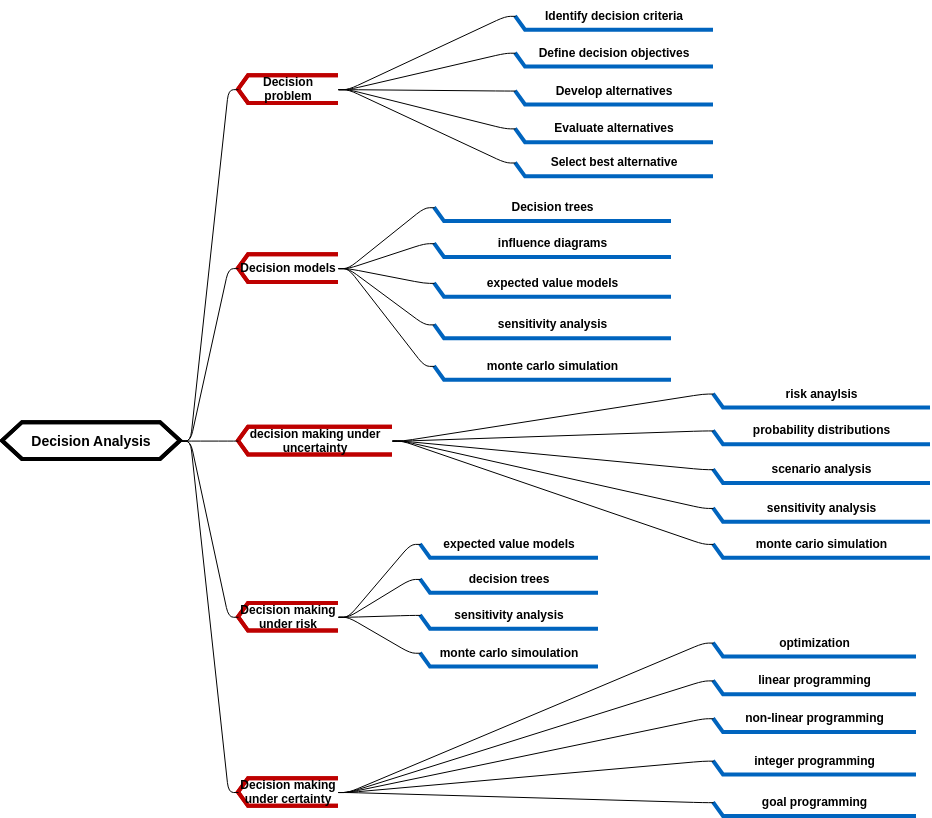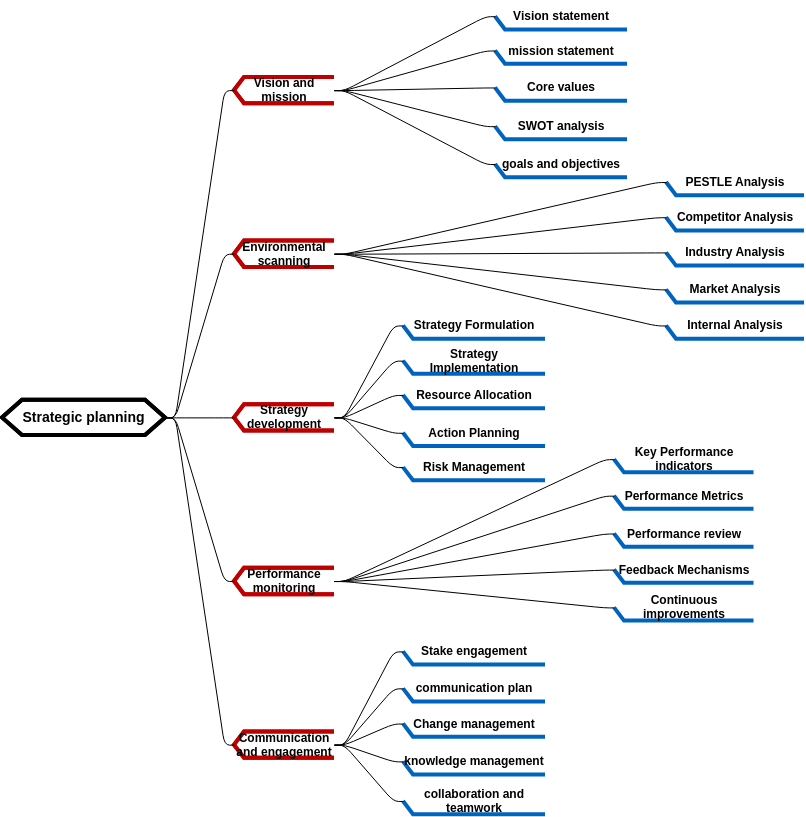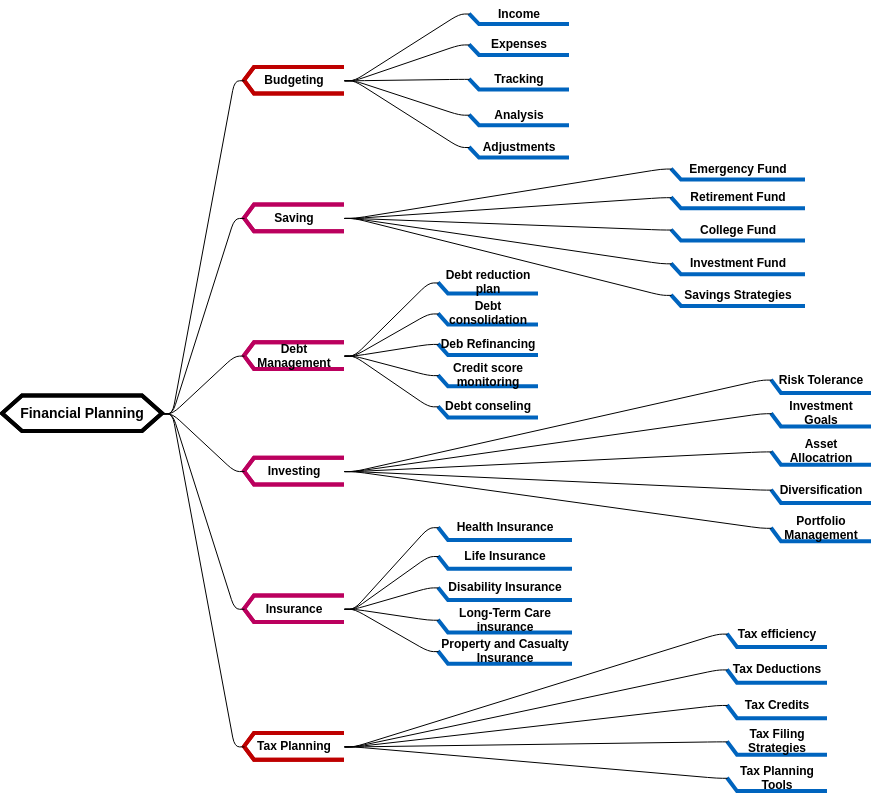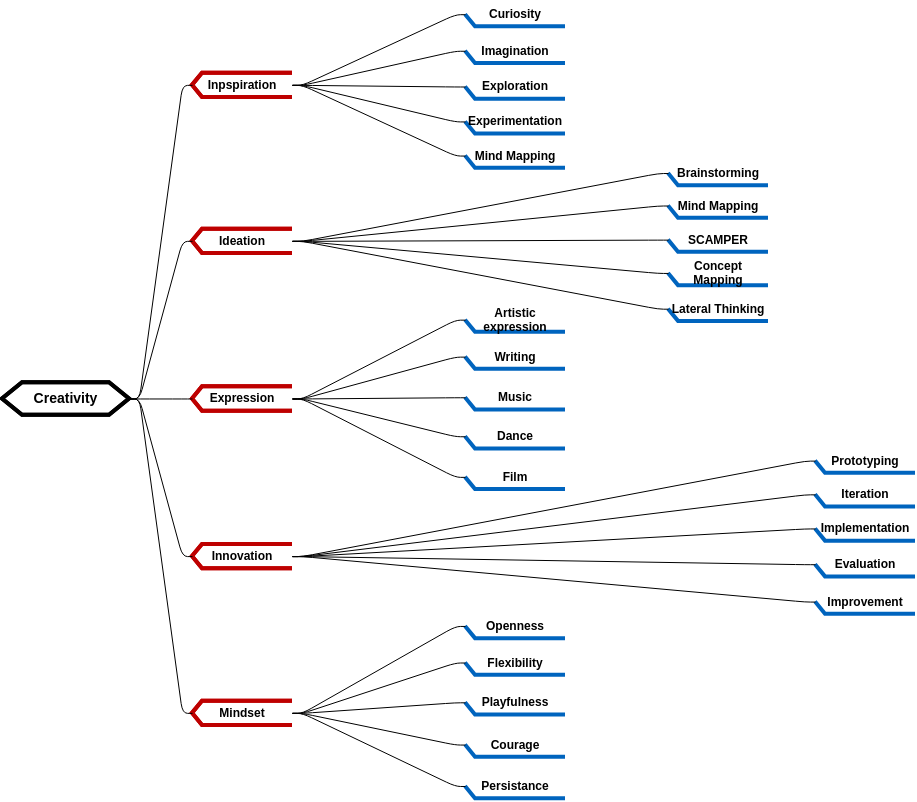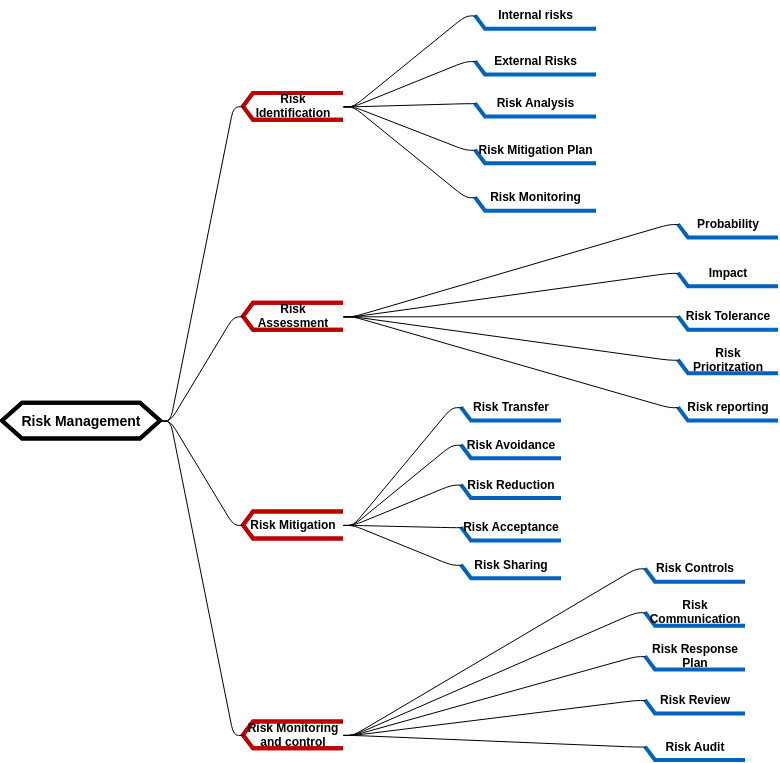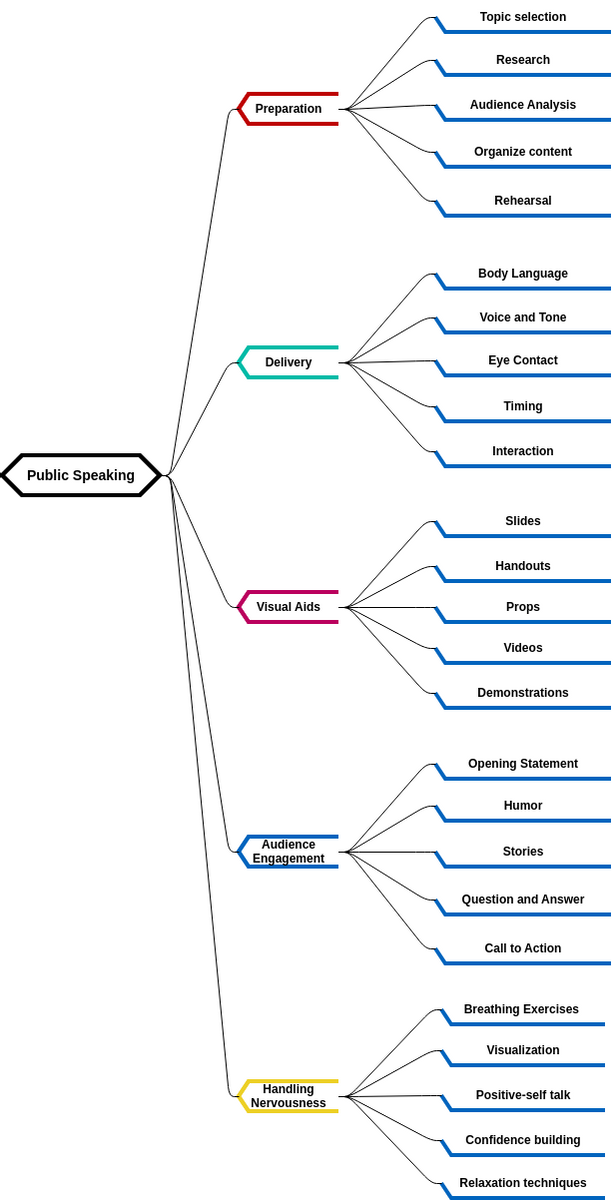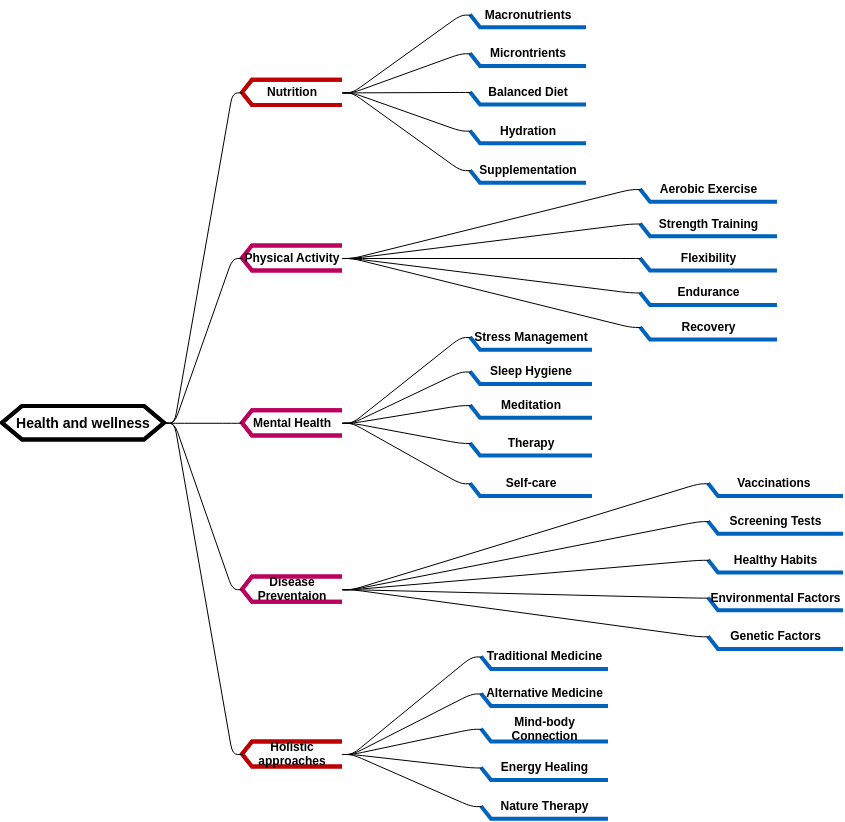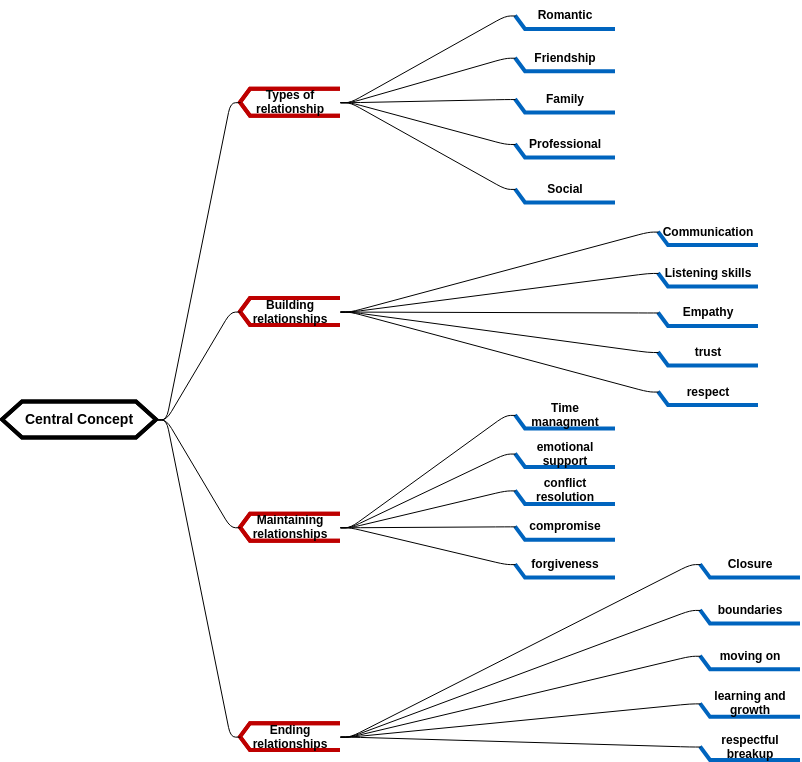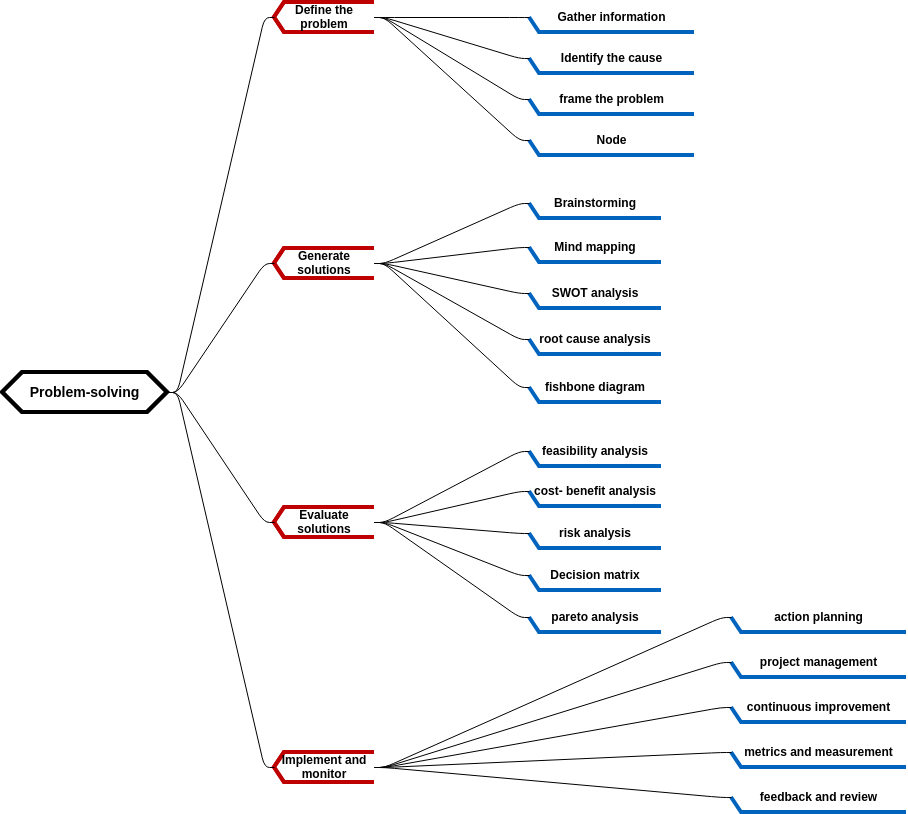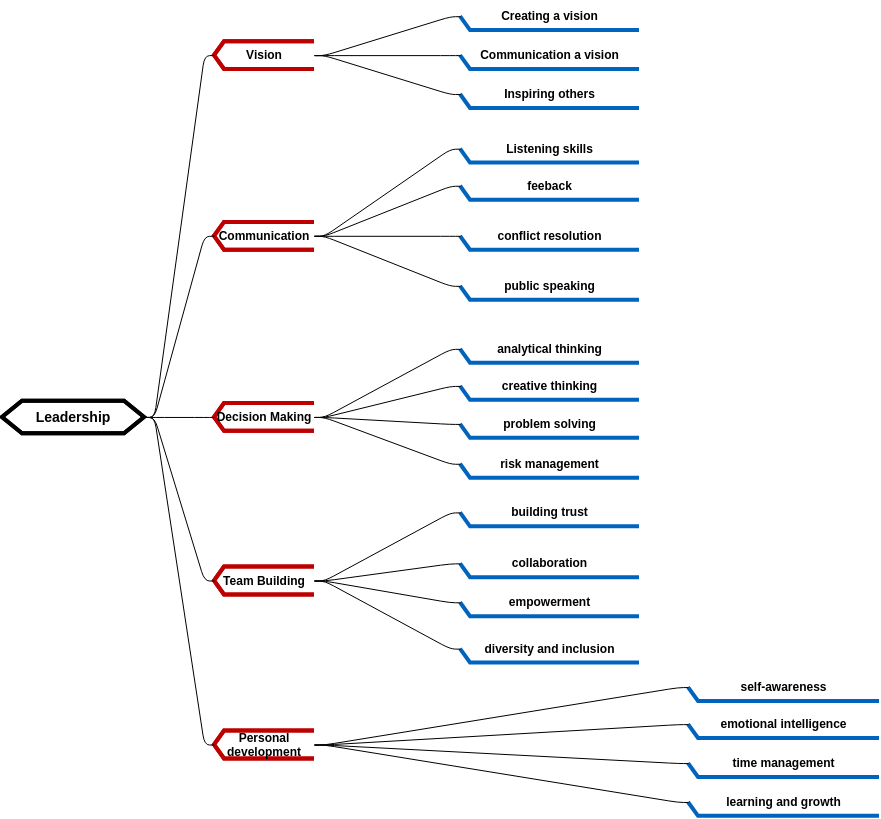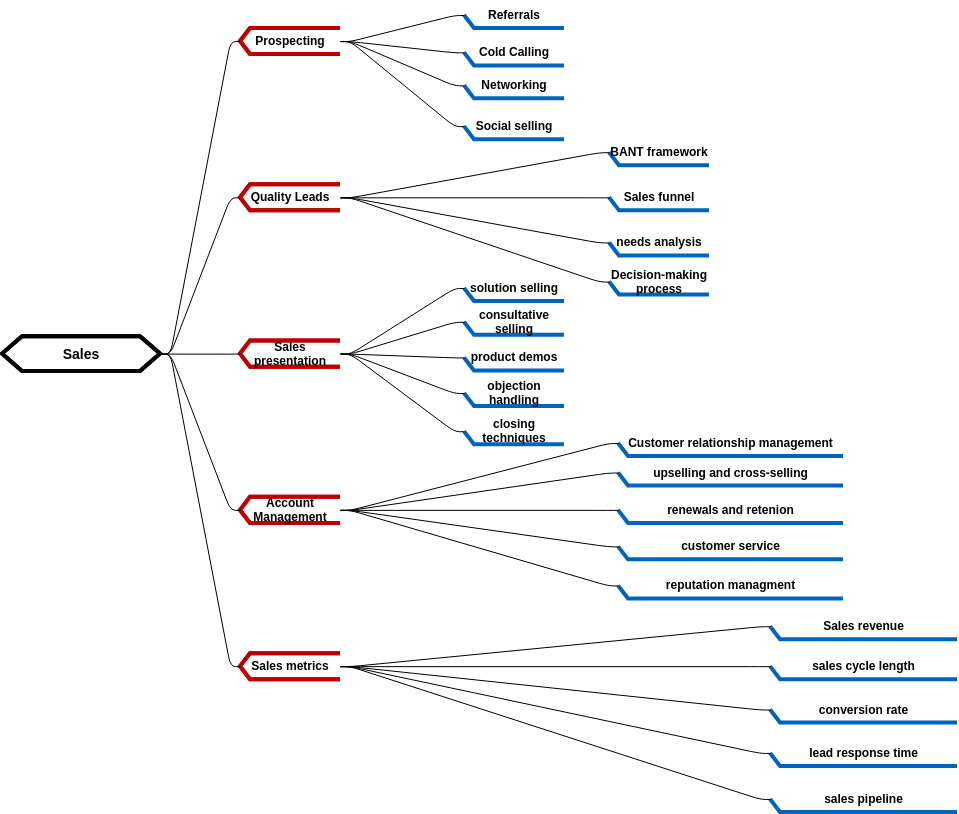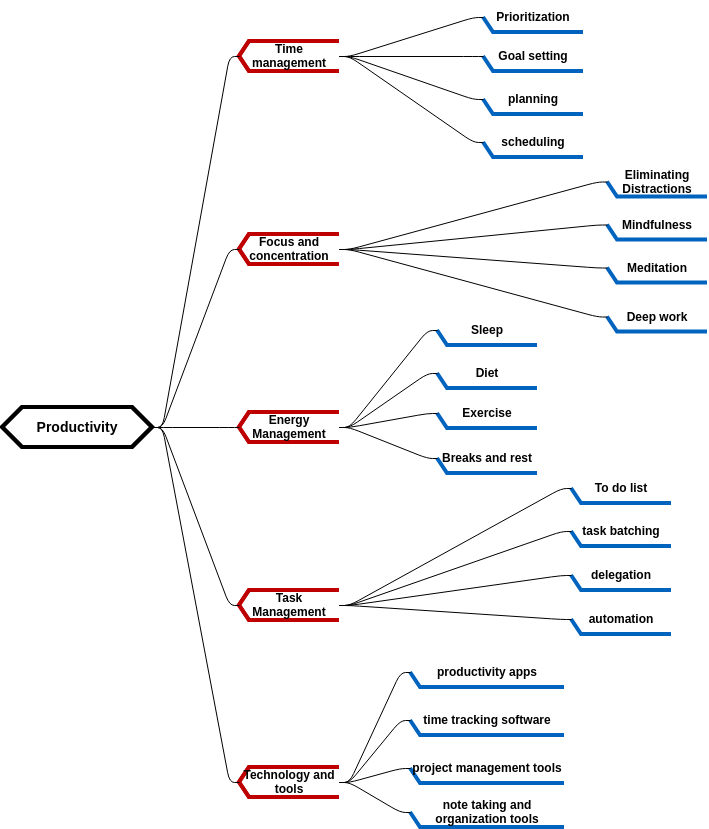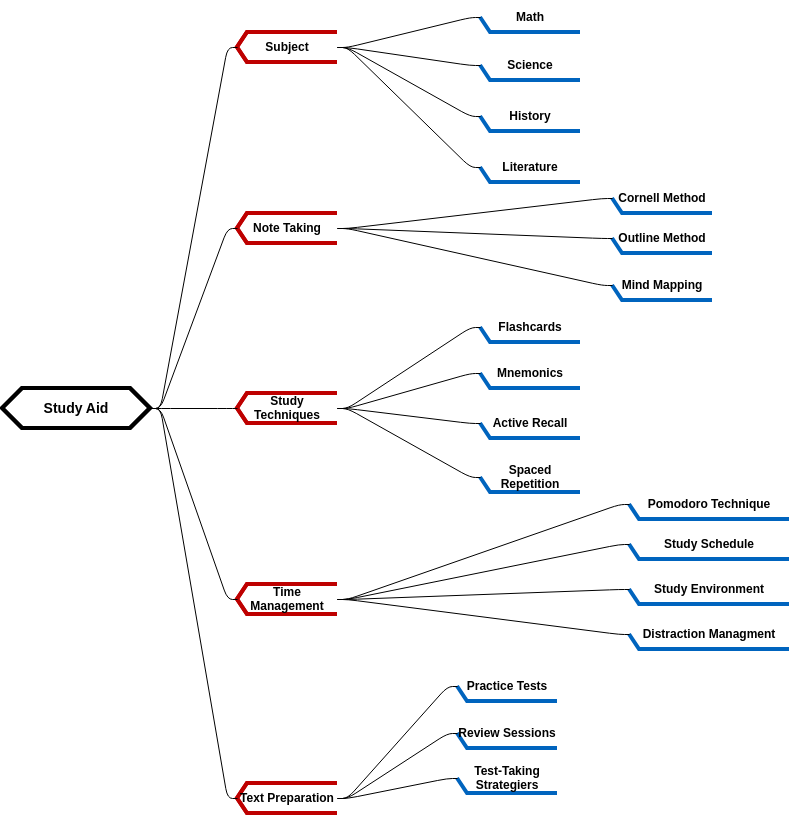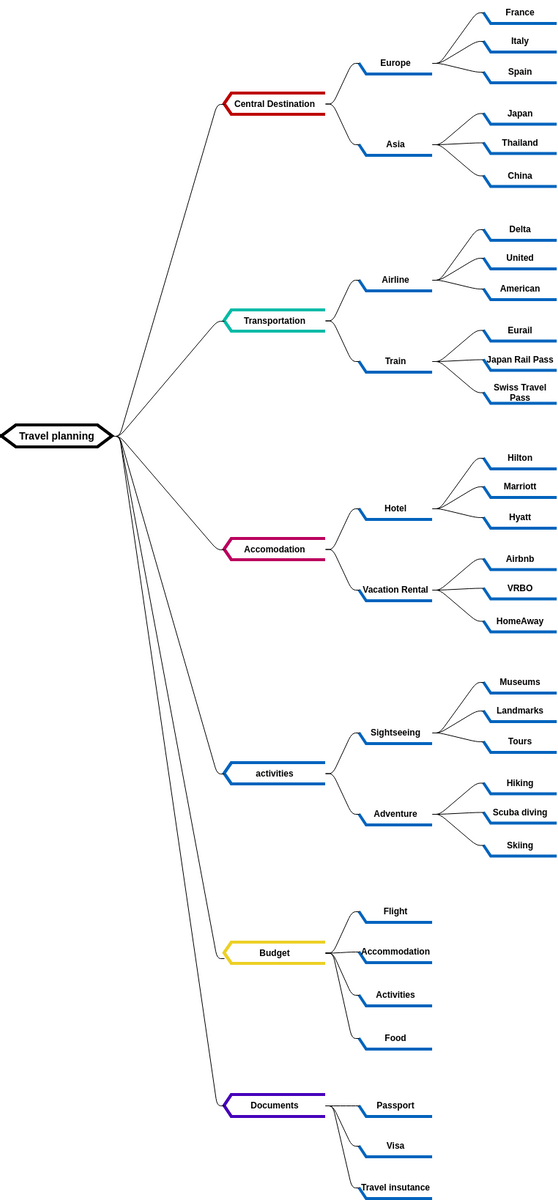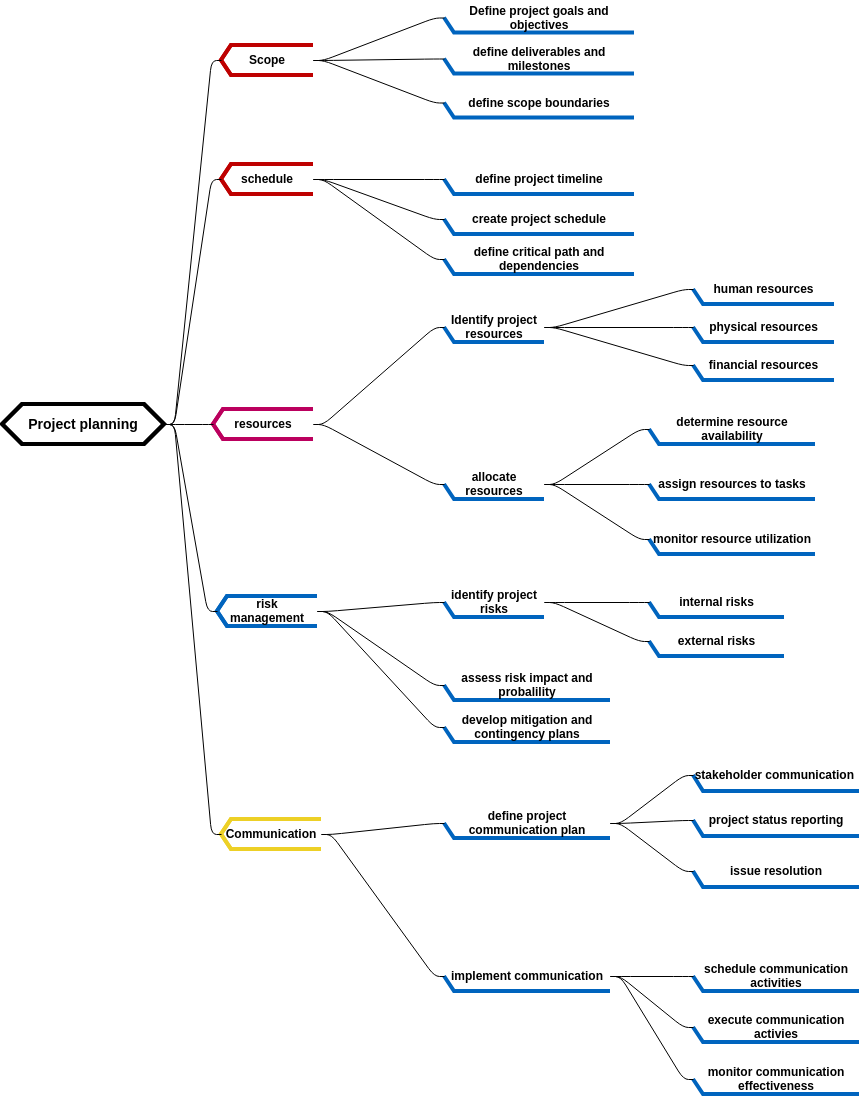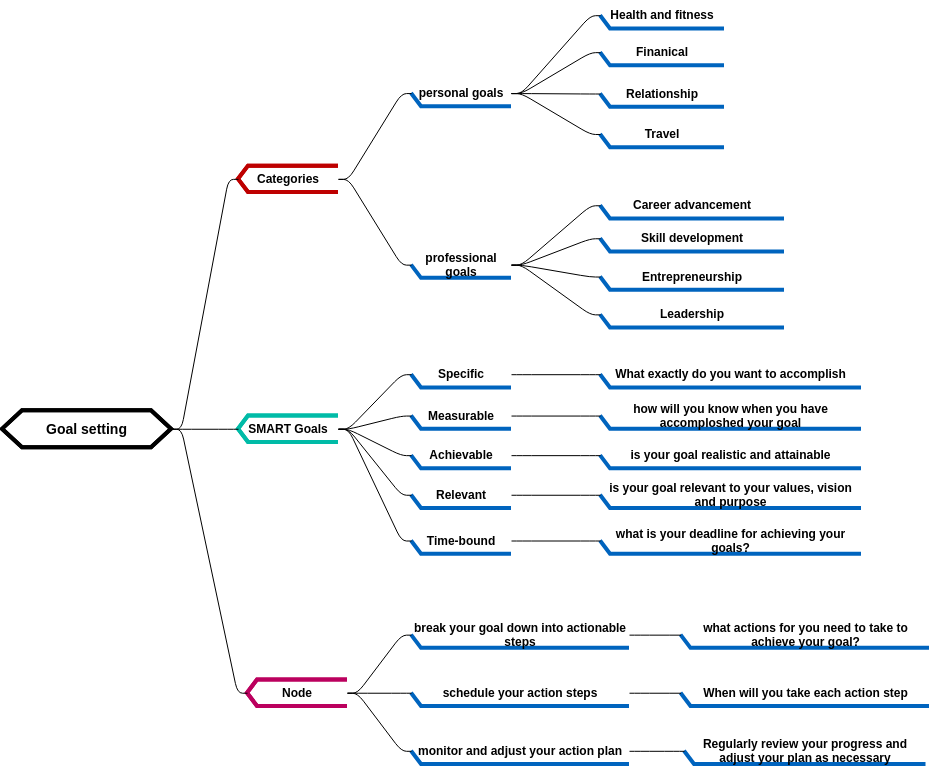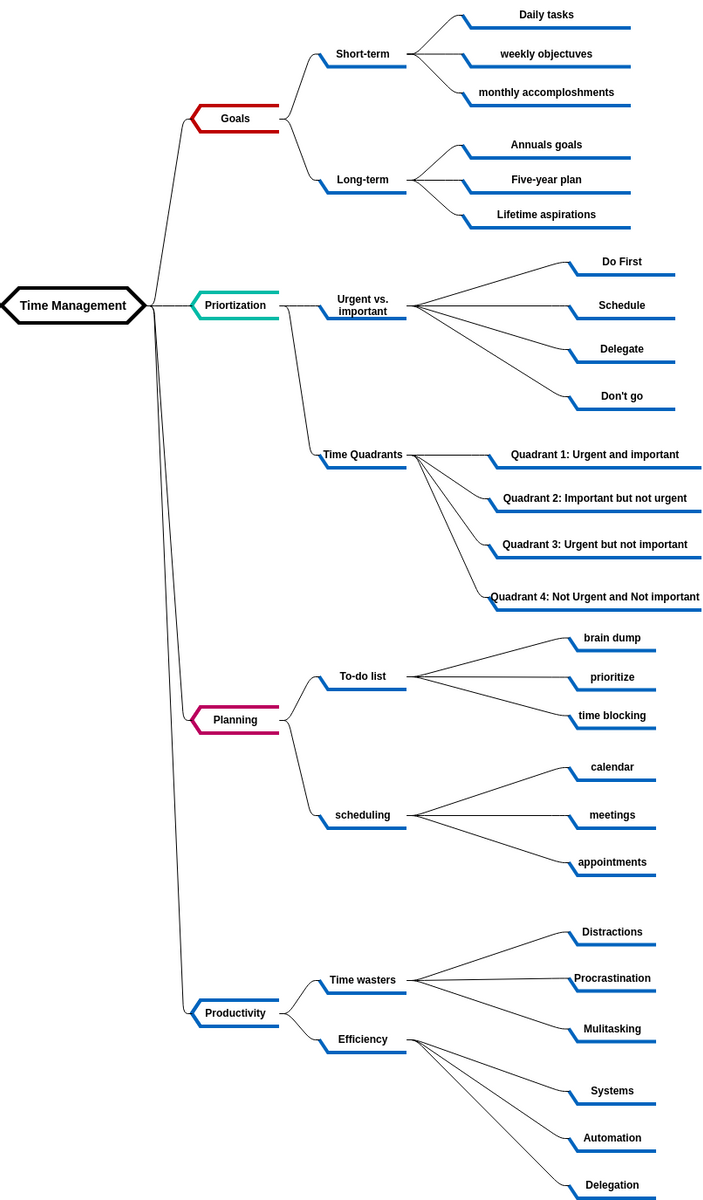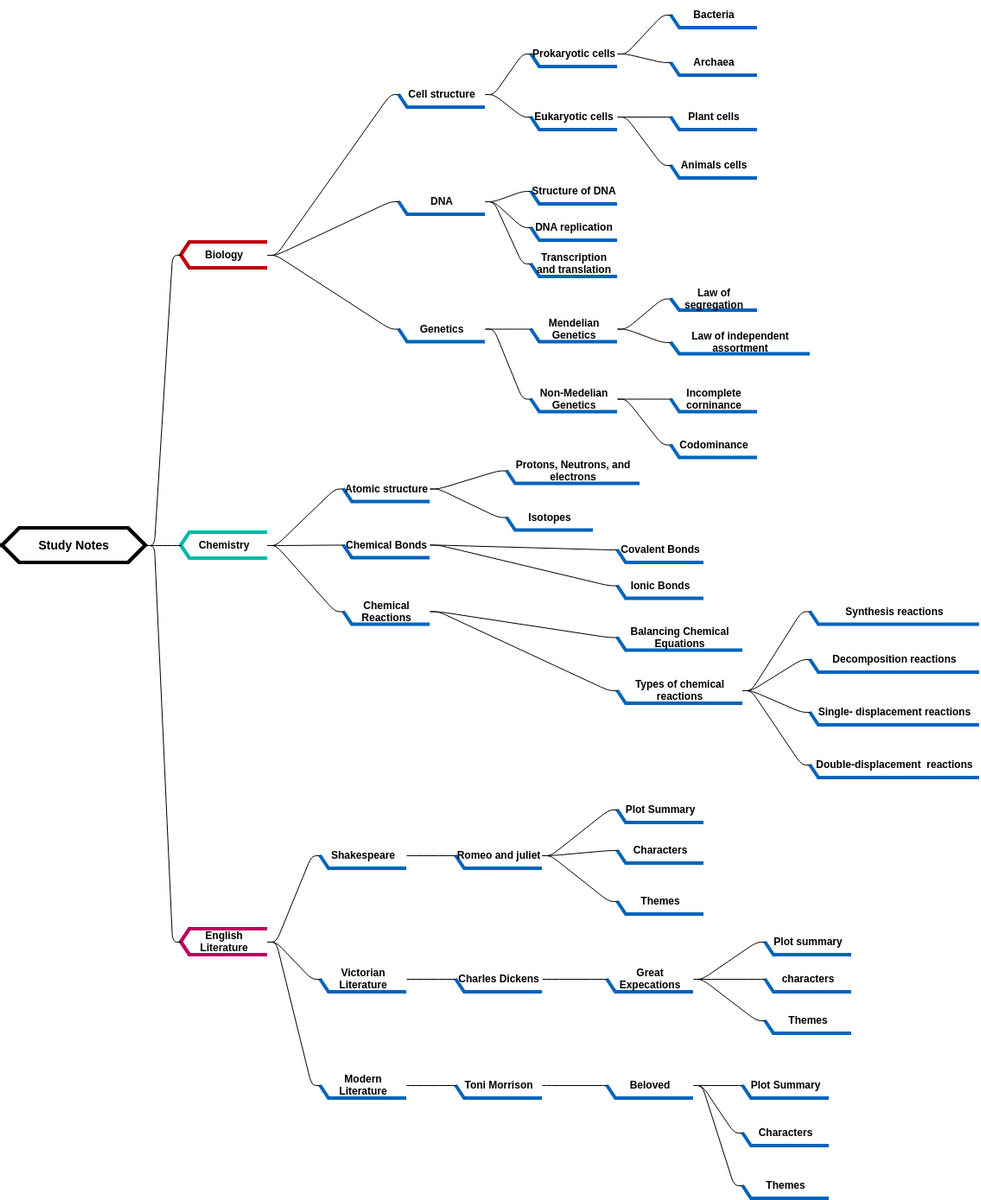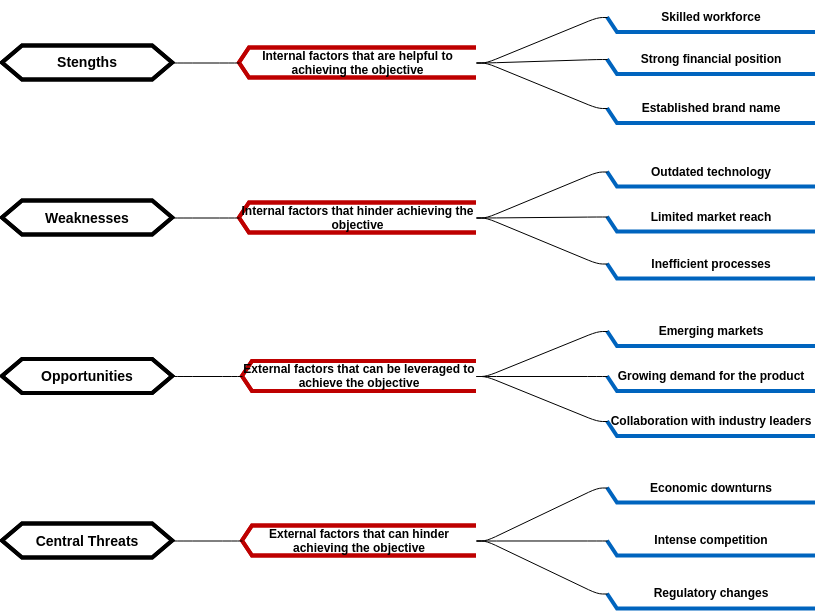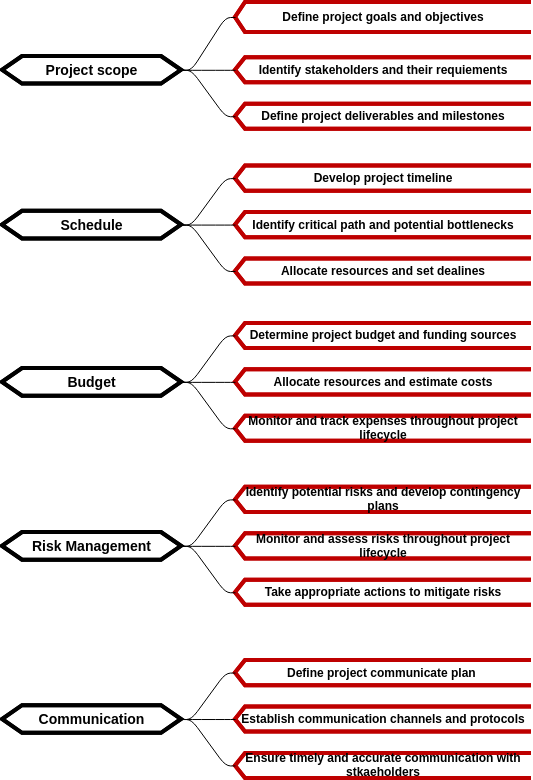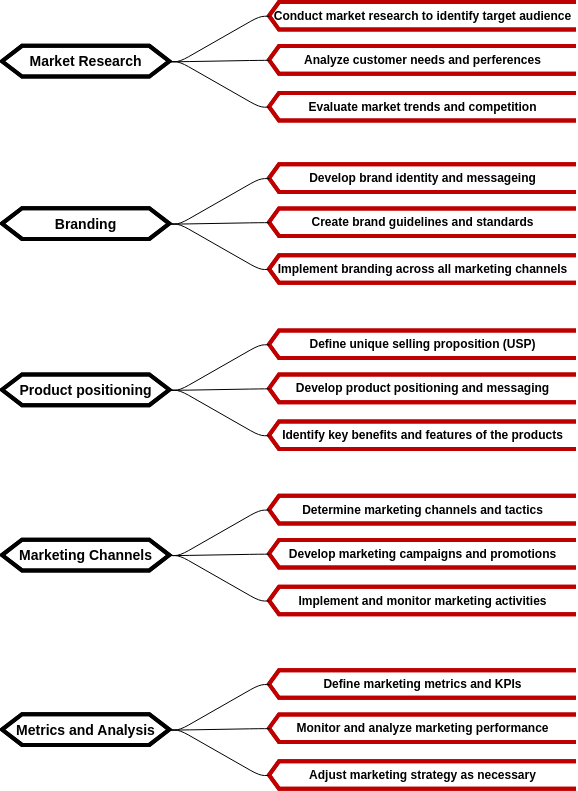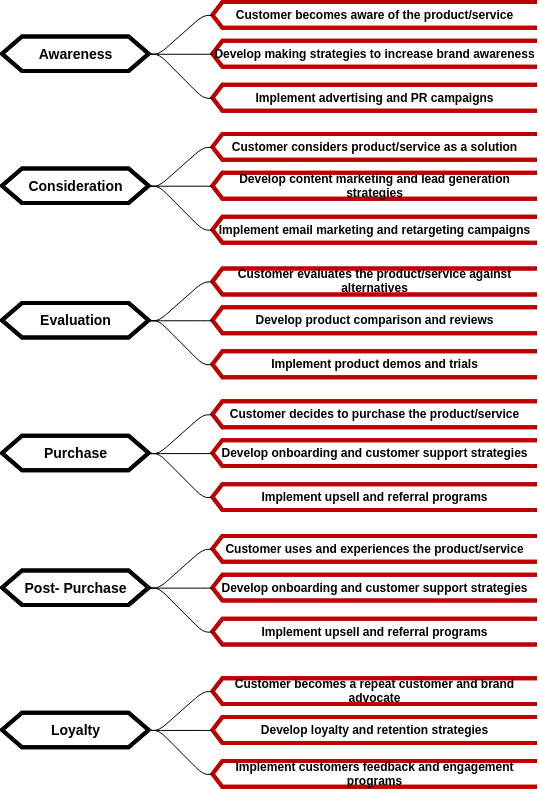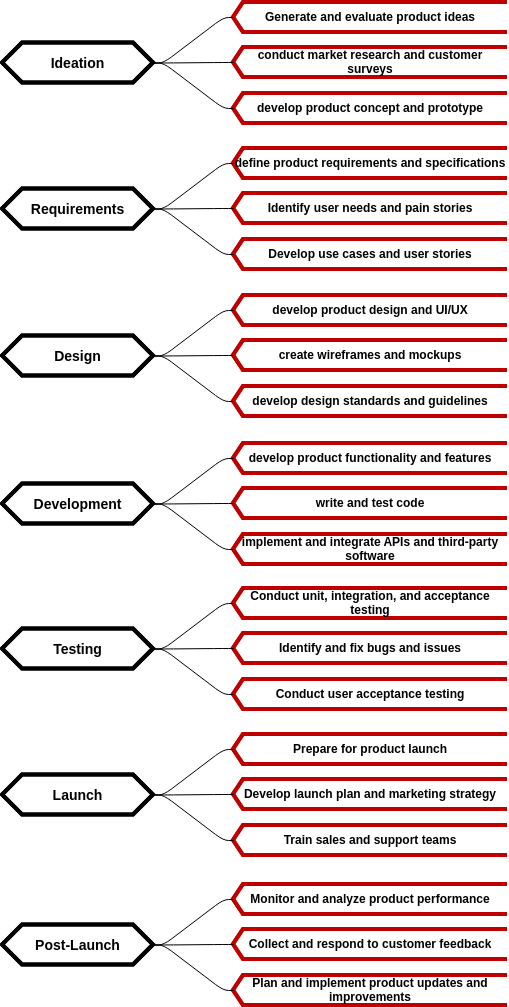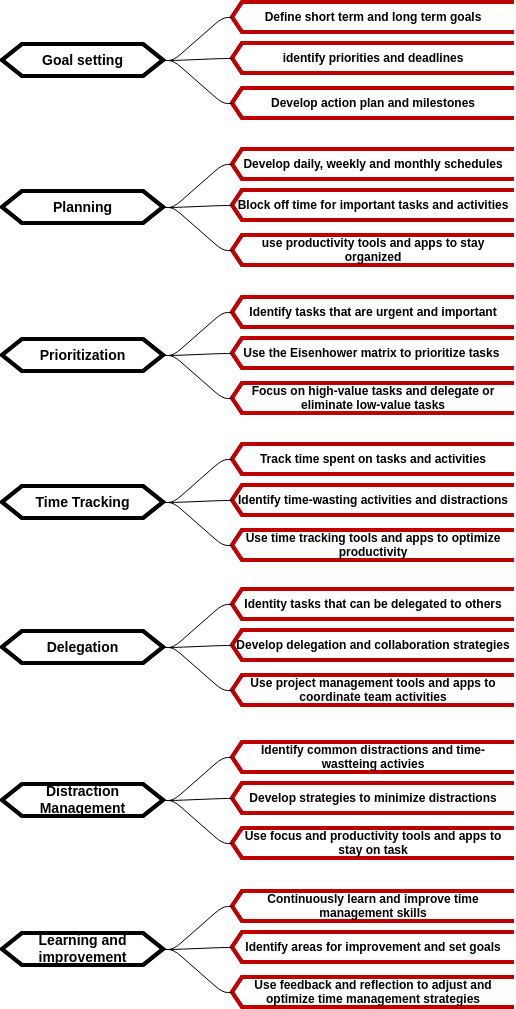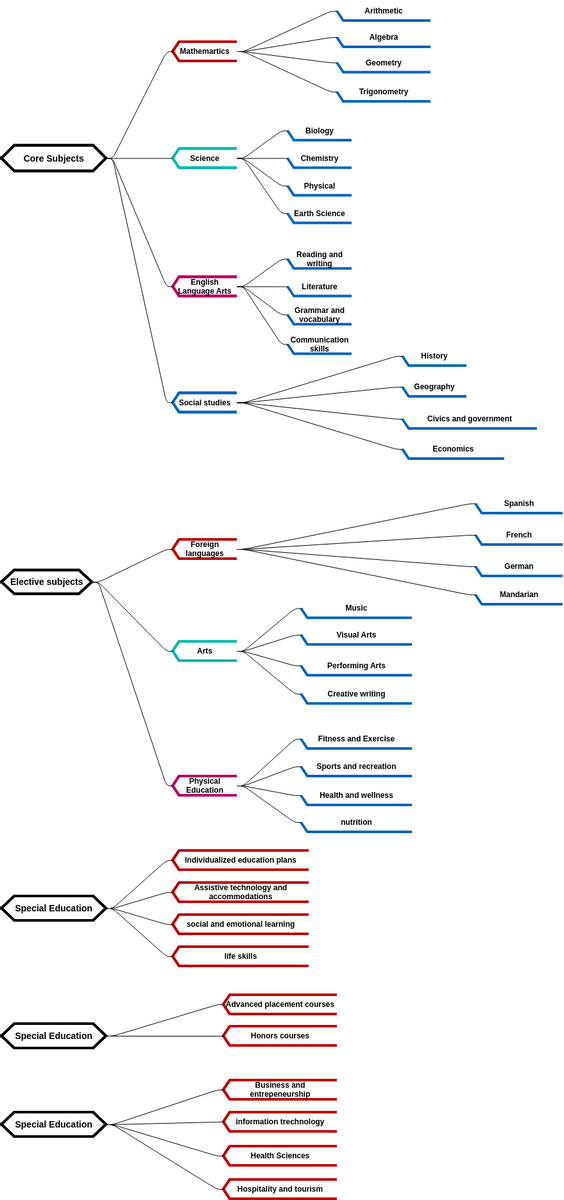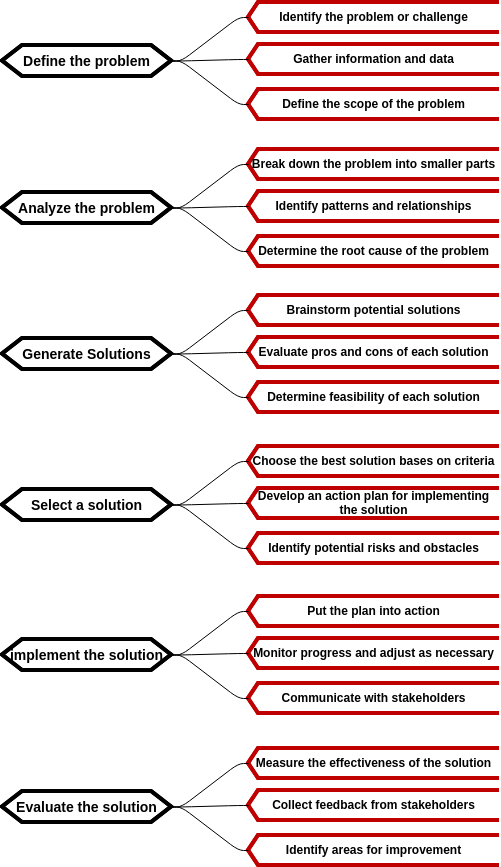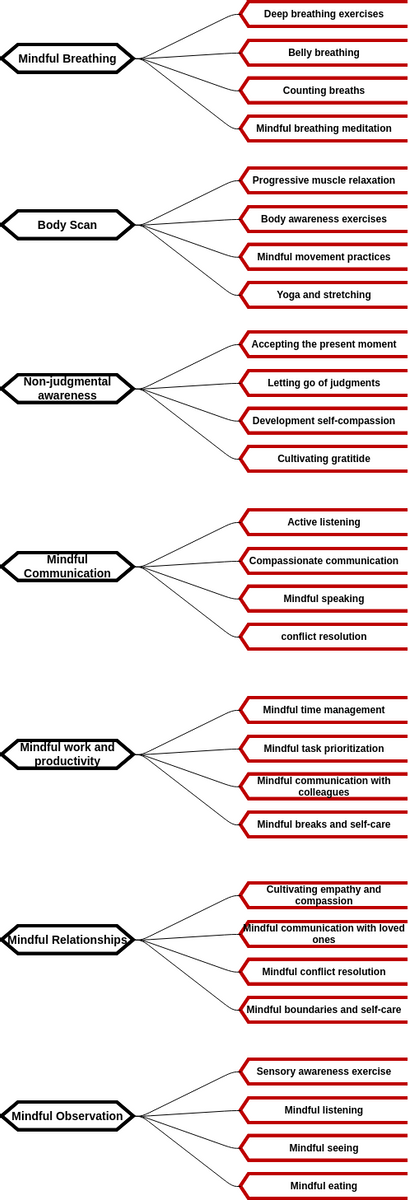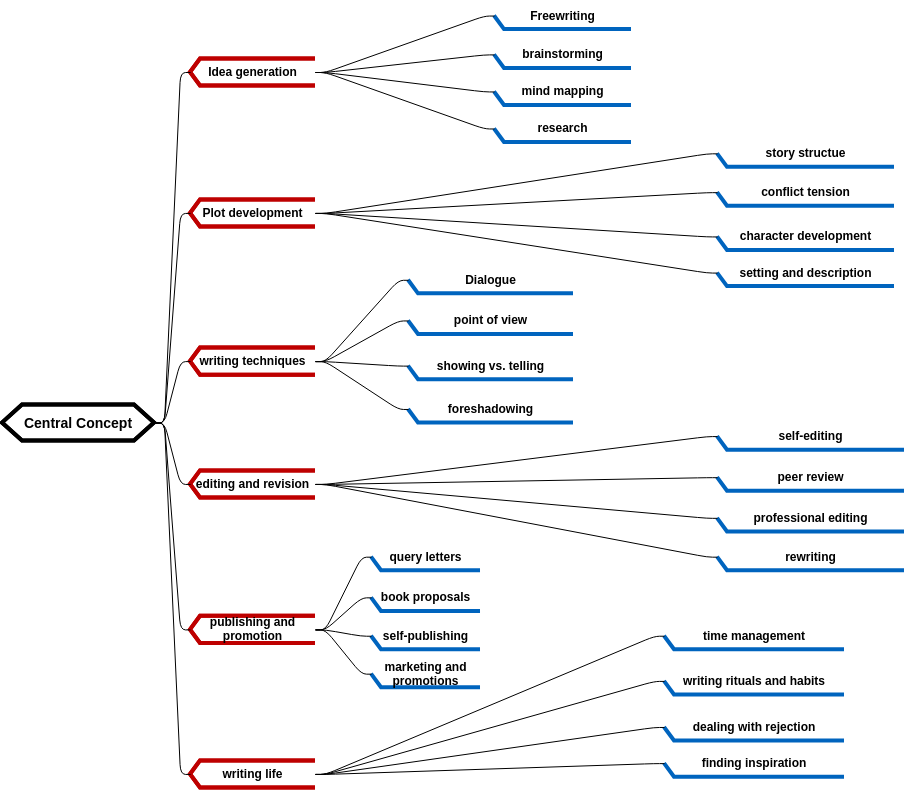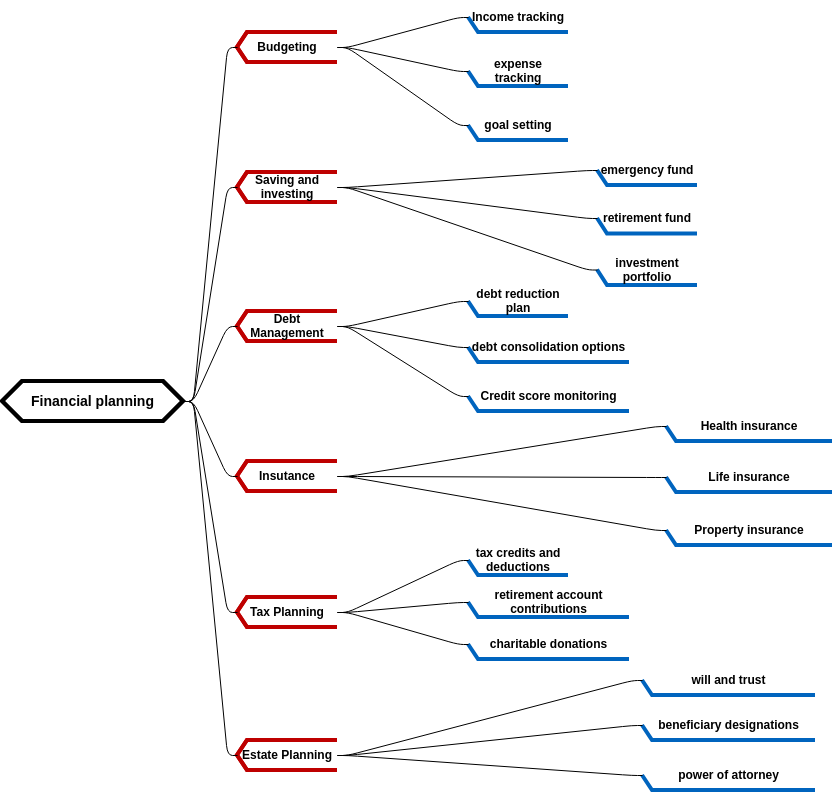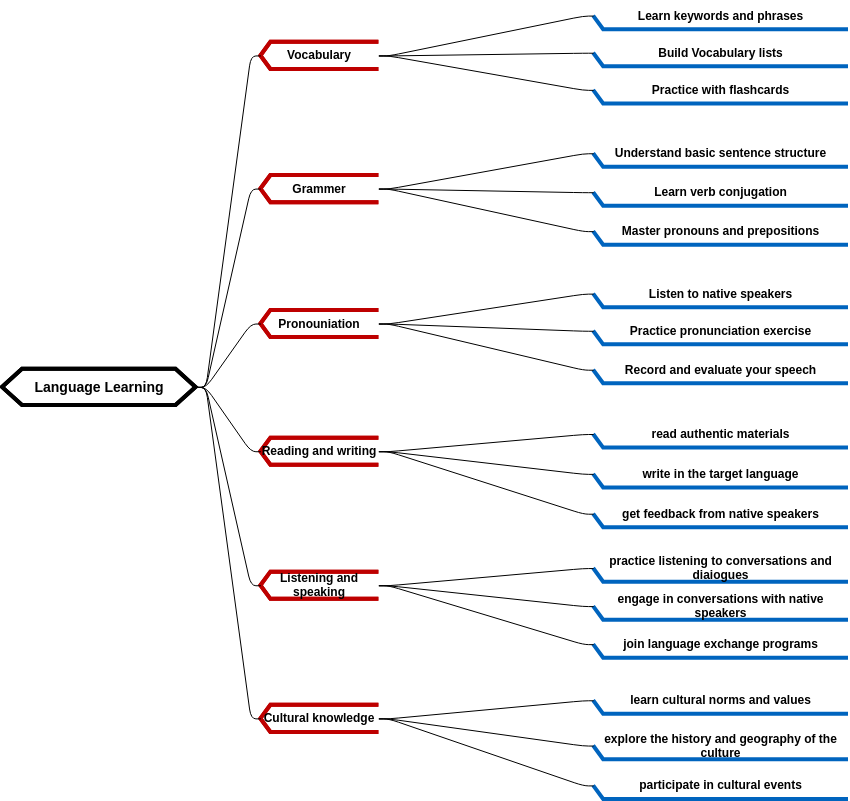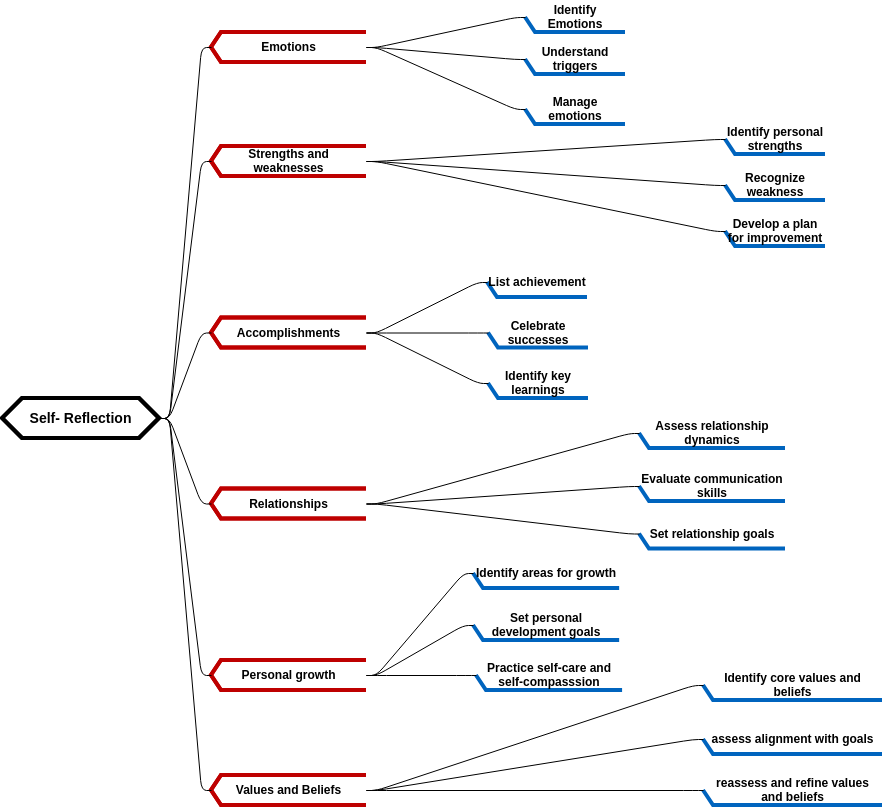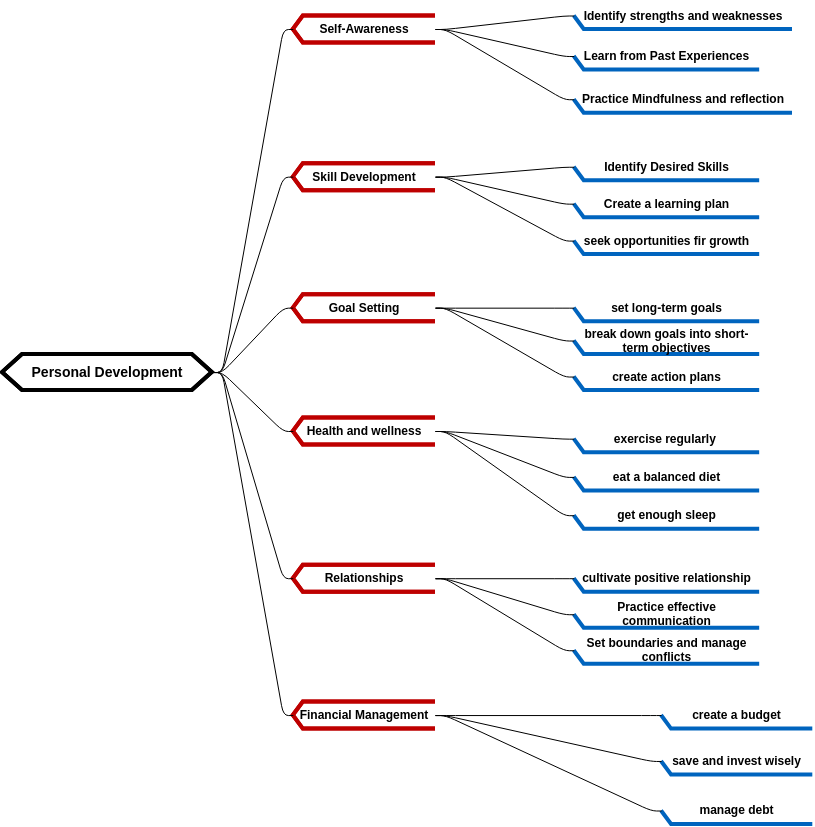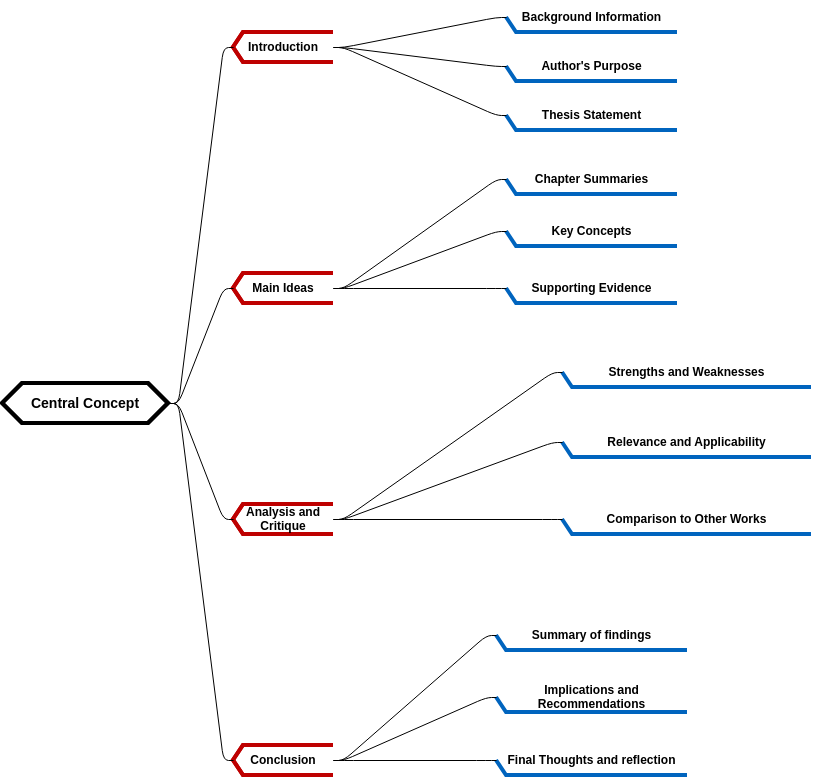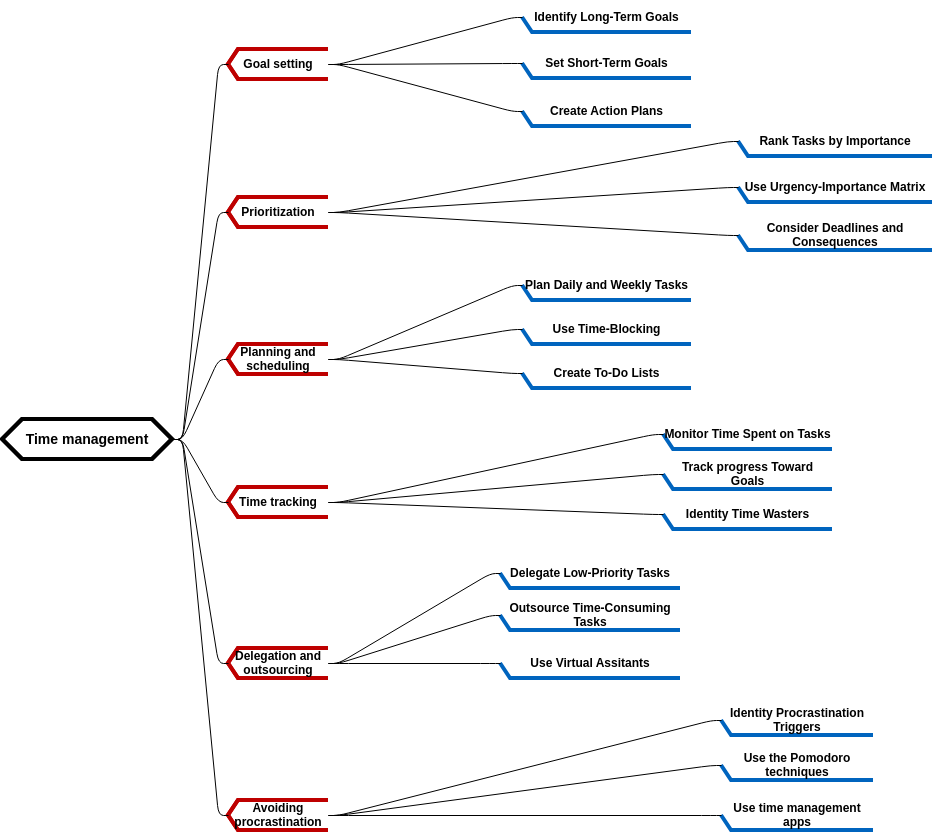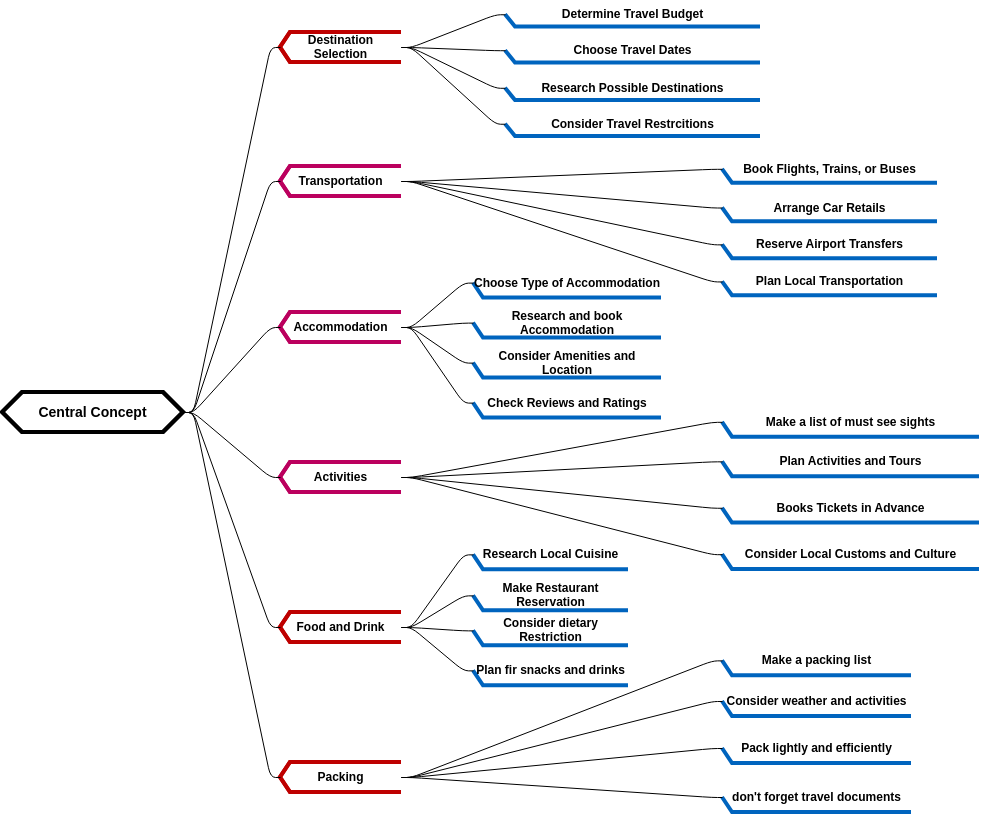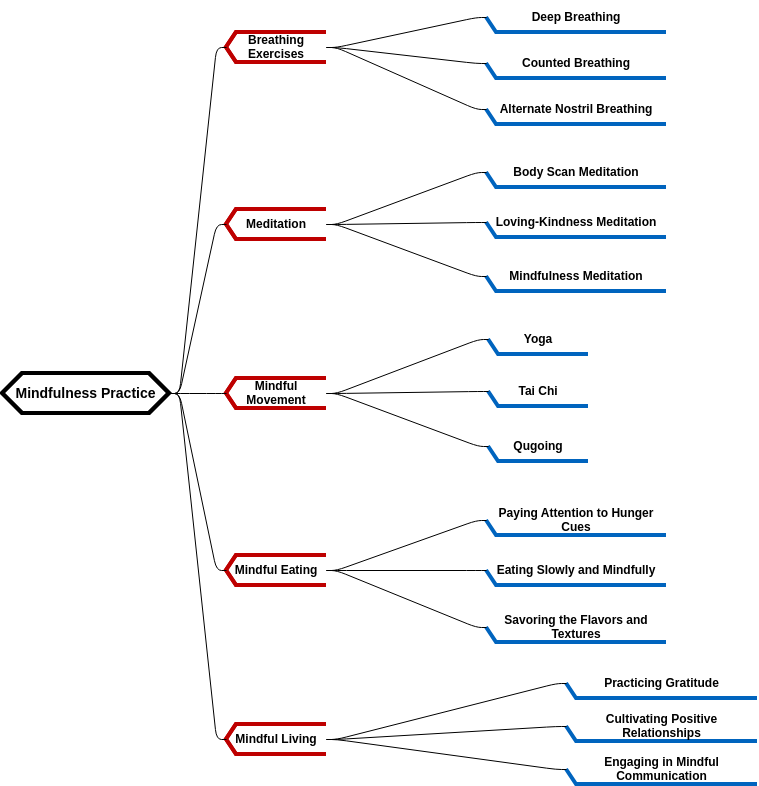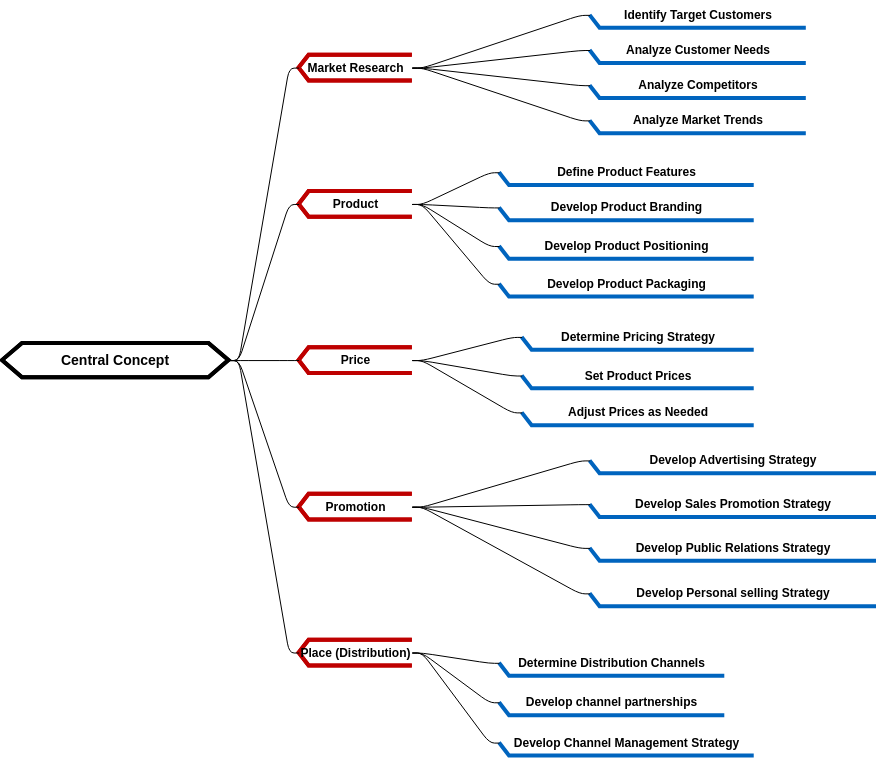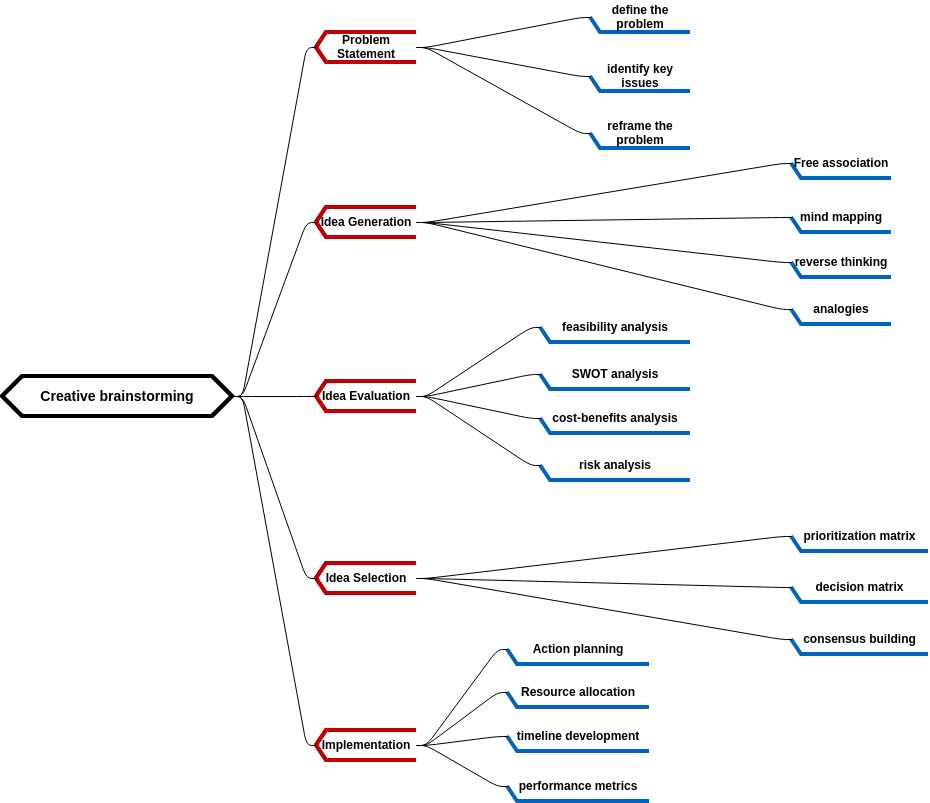Decision Making Mind Map
The Decision Making Mind Map offers a structured approach to decision-making. It begins with "Define the problem," where the focus is on clearly understanding and articulating the issue at hand. This step lays the foundation for the decision-making process and ensures that subsequent actions are aligned with addressing the core problem.
The next step is "Gather information," emphasizing the importance of collecting relevant data and insights. Thorough research enables decision-makers to gain a comprehensive understanding of the situation and make informed choices based on accurate information.
Moving forward, "Generate alternatives" encourages creative thinking and brainstorming to develop a range of possible solutions. Exploring multiple options increases the chances of finding an optimal solution and uncovering innovative approaches.
The mind map then guides decision-makers to "Evaluate pros and cons," which involves assessing the advantages and disadvantages of each alternative. This critical evaluation helps in making balanced decisions that consider the potential benefits, drawbacks, risks, and trade-offs associated with each option.
Benefits of creating this mind map
Creating this Decision Making Mind Map offers several benefits. Firstly, it provides a visual representation of the decision-making process, allowing individuals to see the logical flow and interconnection of the steps involved. This visual clarity enhances understanding and comprehension, making it easier to follow a systematic approach to decision-making. The mind map serves as a visual guide, ensuring that all essential steps are considered and executed in a structured manner.
Secondly, the mind map encourages thorough and comprehensive decision-making. By breaking down the decision-making process into distinct steps, individuals are prompted to consider each aspect carefully. The mind map ensures that important elements such as problem definition, information gathering, alternative generation, and evaluation are not overlooked. This systematic approach fosters more robust decision-making by considering multiple perspectives, weighing pros and cons, and incorporating risk analysis. It promotes a thoughtful and deliberate decision-making process, resulting in more informed choices.
Furthermore, the mind map promotes collaboration and shared understanding among decision-makers. The visual representation of the decision-making process allows team members to align their thinking and contribute to each step of the process effectively. It serves as a common framework that facilitates communication and collaboration, ensuring that everyone is on the same page and actively engaged in the decision-making process. This shared understanding enhances teamwork, reduces misunderstandings, and promotes collective ownership of the decisions made.
Do you need templates for flowchart design? Right away, go to Visual Paradigm Online to look at some of your favorite customizable templates.
